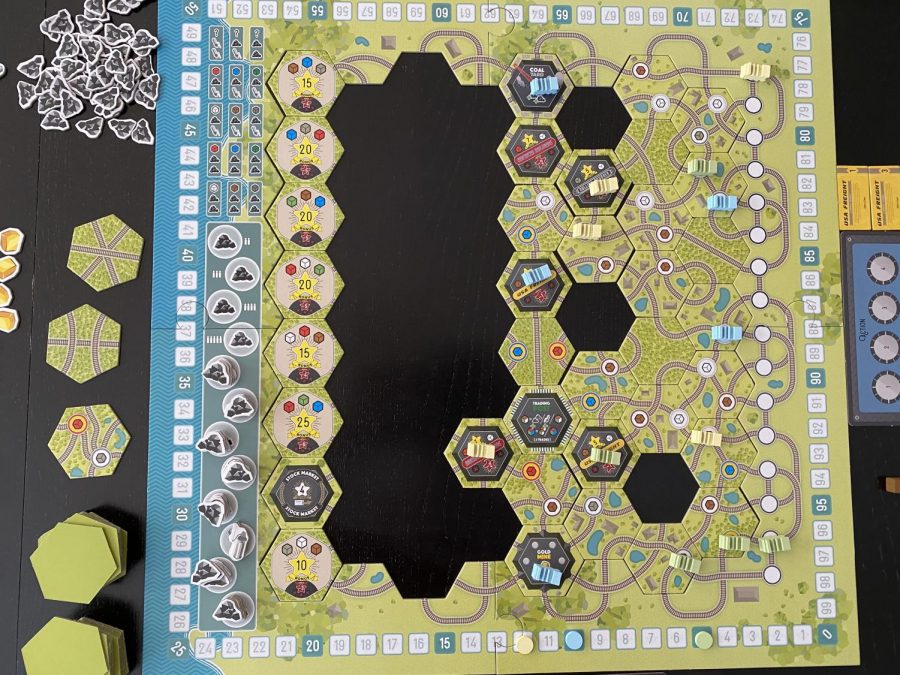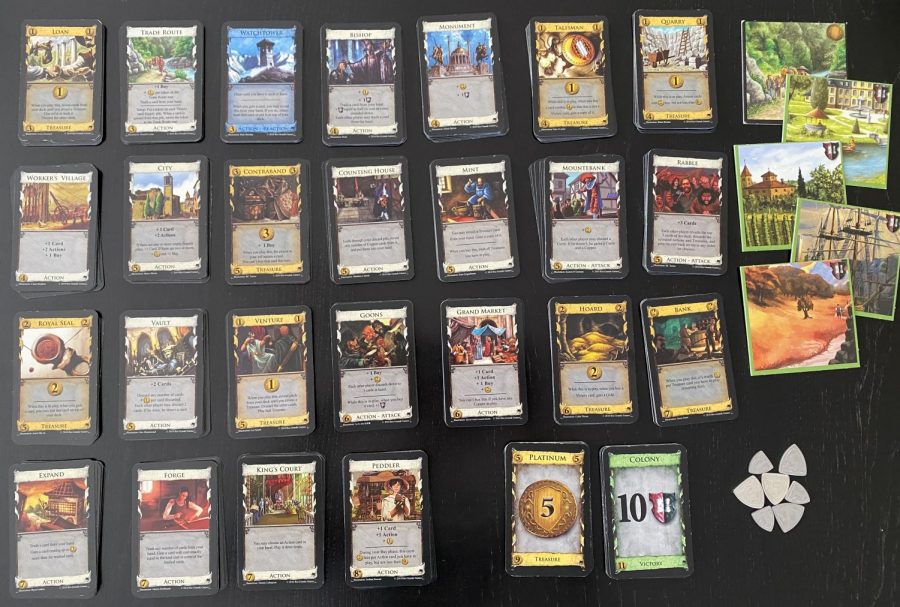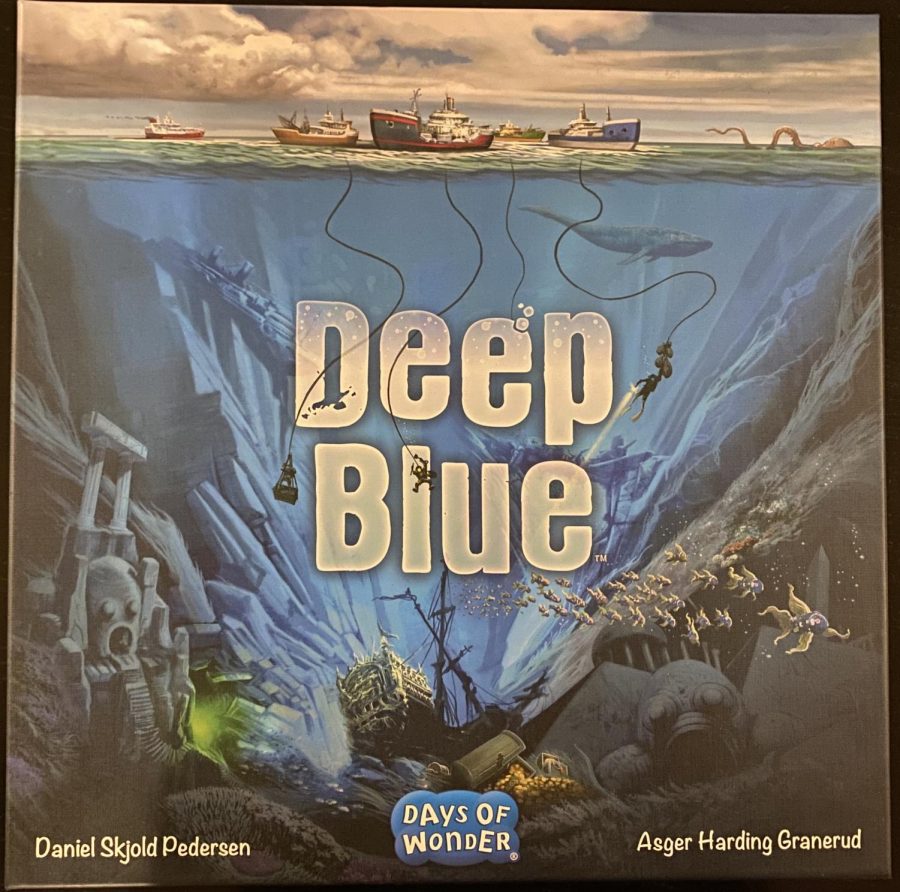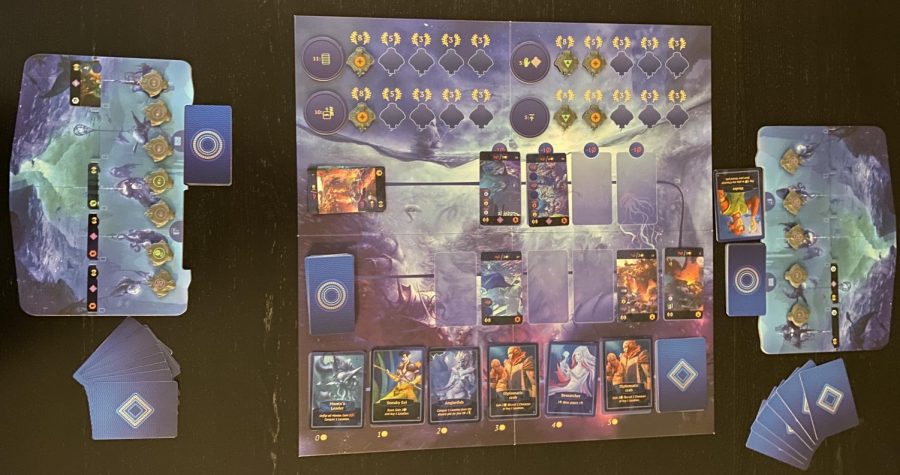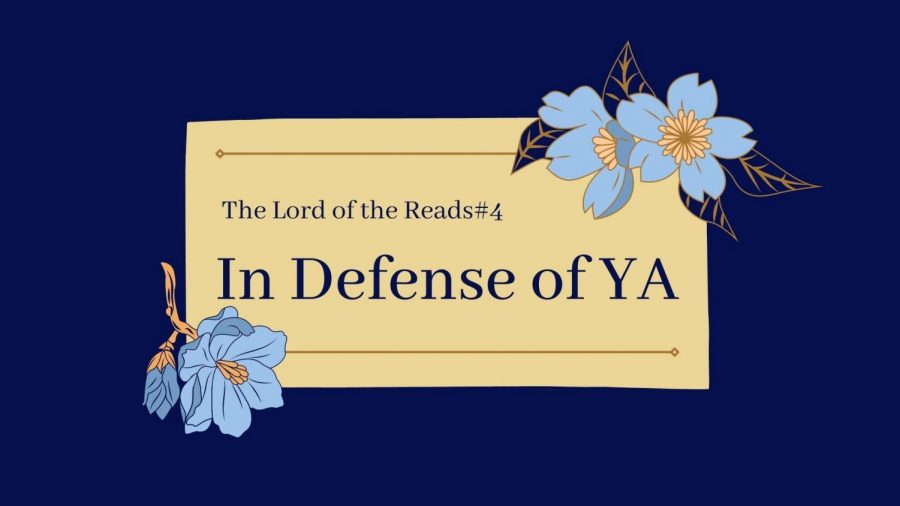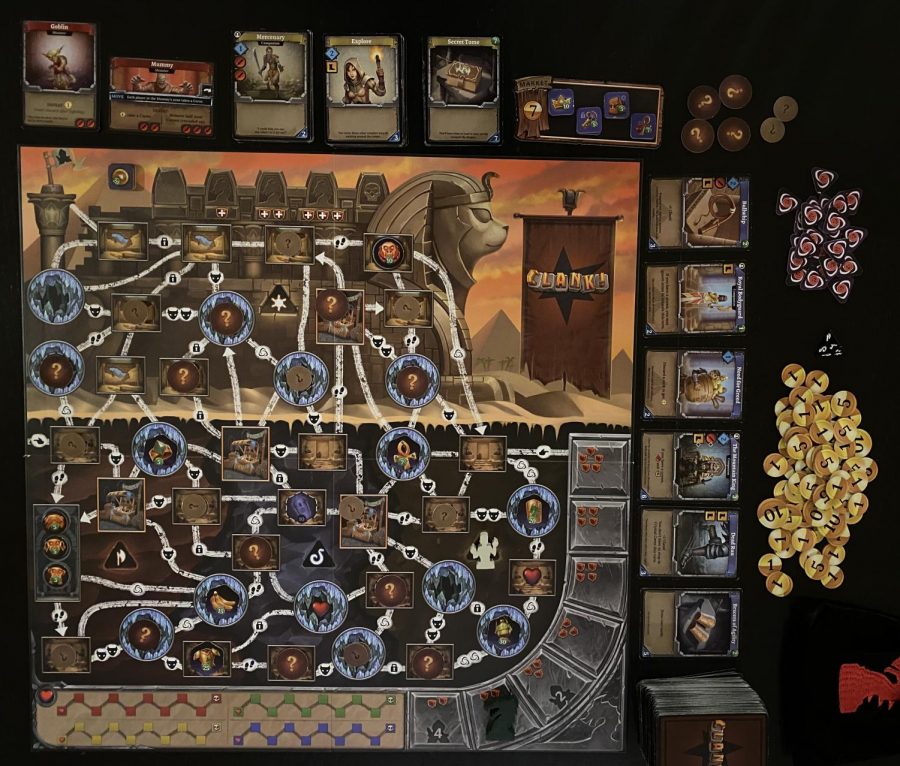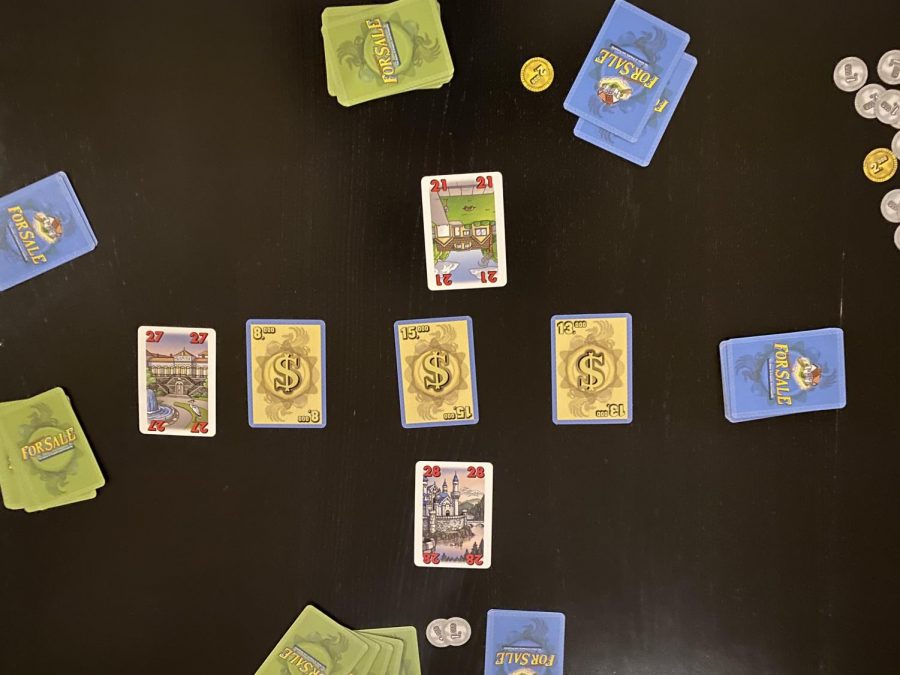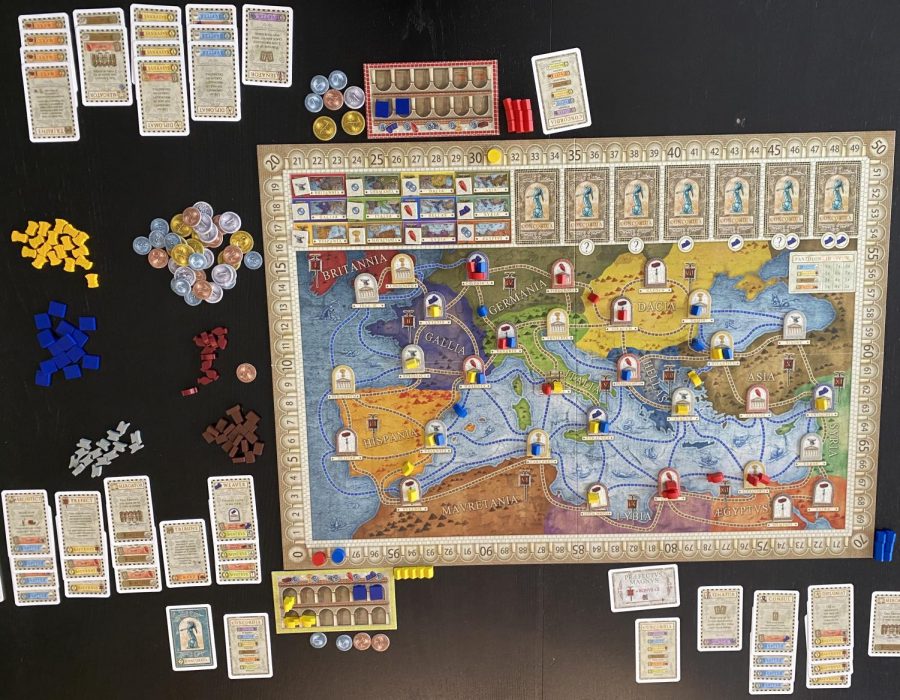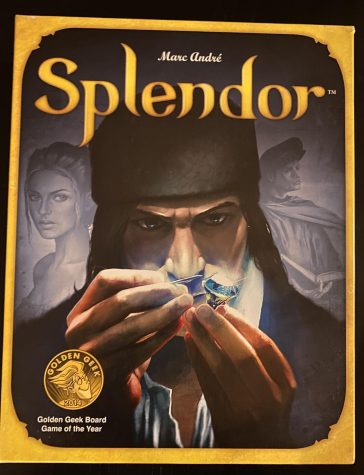
In this week’s game, players will lead a merchant guild as they collect gemstones and use those stones to build developments, which will give them gemstone bonuses and ultimately points. Splendor is a fast-paced family level game that two to four players can easily finish in 30 minutes. The game is designed by Marc Andre, and the artwork is by Pascal Quidault. My copy of Splendor was published by Space Cowboys, but Asmoddee has created a digital version of the game. I will show you how to play Splendor and then share my thoughts and whether this game is worth buying.
How to Play
The game is set up by shuffling each stack of developments and placing four cards from each of the three levels face-up into a grid. Next, a number of noble tiles, dependent on the player count, are randomly selected and placed face-up. Lastly, a certain number of each type of gem token, also based on player count, are taken from the box and form stacks of the different gems.
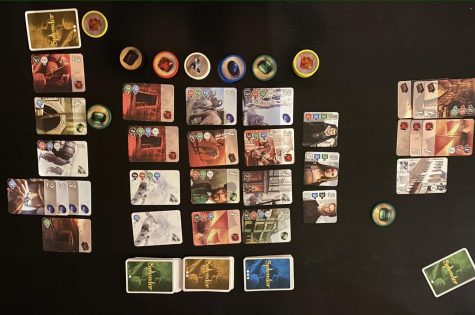
Now, players are ready to start their race to 15 points. Players have four actions to pick from on their turn, but they are all simple and free of unnecessary rules. Three of the options regard ways to take gem tokens, and the fourth option is to buy a development that the player will add to their tableau.
The first way to take gems is to take three different gems. The second option is to take two gems of the same type; this option is only available as long as there are at least four gem tokens in that pile.
The last way to take gems is to reserve a card and take one gold token. To reserve a development card, a player takes any of the 12 face-up cards or one from the top of a stack and adds it to their hand. Developments in a player’s hand can only be bought by that player. However, players can have three reserved cards, and the only way for one to remove cards from their hand is to buy them. If there is gold available, a player who reserves a card also takes one gold chip. Gold can be spent as a gem of your choice, and reserving a card is the only way to get gold. After you take gem tokens, you must return gem tokens to the supply, so you have no more than 10 tokens.

The purpose of collecting gems is to buy developments. Instead of taking gems, you may buy any face-up card or any card you reserved by paying the gems listed in the bottom-left corner. Once you purchase a development, add it to your area and sort developments by the gem bonus in the upper-right corner. These gem bonuses are important because they reduce the cost of all future developments by the gem shown, and you do not discard purchased cards when using their gem bonus. This makes future cards cheaper and is the only way to buy some of the cards in the second and third rows, which are worth victory points.
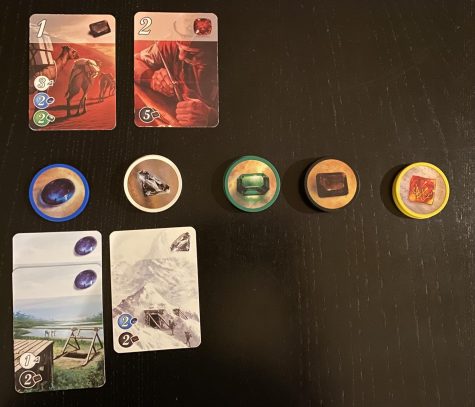
If a player can get certain combinations of gem bonuses, they may be able to get a noble tile, worth three points. To get a noble tile, they must have a number of gem bonuses from their developments that match or exceed the noble tile. For instance, if a noble tile had a blue four and a white four, they would take this noble tile at the end of a turn where they have four blue bonuses and four white bonuses. Even if a player meet the requirements for multiple nobles on the same turn, they can only take one tile per turn. Once a noble tile is taken, it cannot be taken by another player.
Players will continue to take gem tokens and buy developments until one player reaches 15 points on their turn. At that point, players finish the current round of play, and the player with the most points, not necessarily the one who reached 15 points first, wins.
Final Thoughts
Splendor is a great game that a lot of families and friend groups will enjoy playing. Starting with the components, the cards are of very good quality and the tokens are impressive. They are thick and similar to poker chips, which makes them easy to use. Overall, the artwork is pretty good, but I would have preferred to see different artwork on each card since none of them have identical costs and still use the same artwork. Also, the nobles are a little creepy-looking; I’m not sure what the publishers were going for with their design.
The best part about Splendor is how easy and fast it is to play. The rules are simple, with players just taking gems or buying a development each turn. I think almost anyone who has the patience to do so can play this game with no issues at all. The rules for buying developments are also simple and interesting; each development you get reduces the cost of all your future cards by a certain gem, and there is nothing extra to complicate things.
However, being simple and easy does not mean that Splendor is boring from a strategic viewpoint. On the contrary, the game offers numerous strategies within its simple design and a multitude of tactics that players can use to get an advantage.
For tactics, the gem tokens you take on your turn help you, but can also foil your opponents if you take the last gem from a pile or make it illegal to take two identical gems of a certain type. The game always feels like there are too few gems in play, which makes the decision of which gems to take more important. The 10-token limit may seem like a way to stop players from hogging tokens, but it actually plays a larger role in the game; players can take a look at their opponents to see who is closer to that limit and more likely to buy a card and put more tokens into the supply.
On the strategic side of the game, players must choose how they will approach getting 15 points. One option is the methodical approach to start getting cheap level one cards and slowly build up gem bonuses to take level two and level three cards and target the nobles. A more aggressive approach is to go straight for the level two cards and try to get 15 points before other players are able to get many nobles.
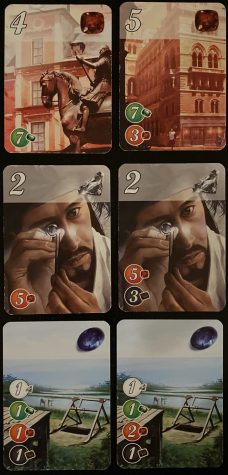
There isn’t much else to mention about Splendor besides how much depth and player interaction are involved in this incredibly straightforward design. That being said, I don’t want anyone to get the false impression that this game has a ton of strategy. It is quite far on the lighter end of the scale, and it isn’t perfect. For instance, 15 point target is great for game length purposes, but I’m not convinced that it is a perfect mark for balance. I think that 16 or 17 points might create closer games between two opposing strategies.
Another thing I like to see in games that Splendor didn’t have is replayability. Nothing major changes from game to game, so most games are pretty similar. The only aspect of the game that provides replayability is that you can play this with so many different people and possibly discover new things about the cards and gem patterns in their costs and bonuses the first few times you play.
The last criticism I have about this game is that some cards are strictly better than others. While this might cause tension as to who will reserve a card first, I don’t like seeing cards that are obviously better or worse than others and would have preferred more card variety, so that all the cards are interesting and players can be happy with whatever card they do end up with.
In the end, the verdict is that Splendor is an amazing game for many reasons. If you want a game to play with a family of any age or enjoy set collection and tableau-building games, Splendor is a game you have to check out. The game has lots of positives and just a few negatives only noticeable to experienced gamers, so I’m going to give Splendor a 7 out of 10.
[star rating=”3.5″]


